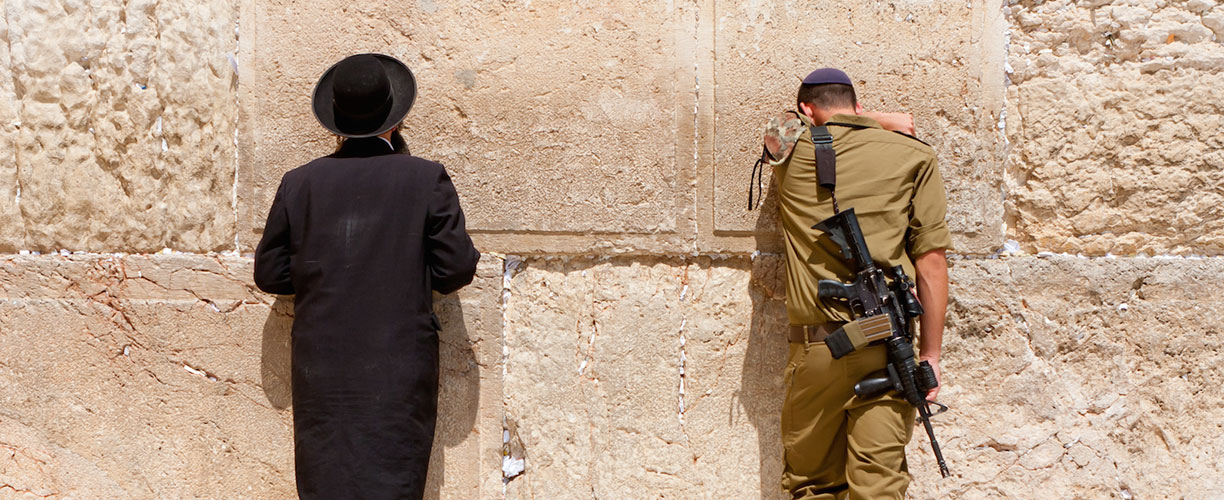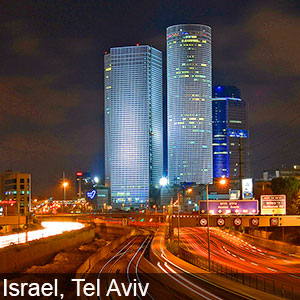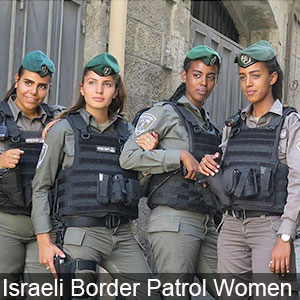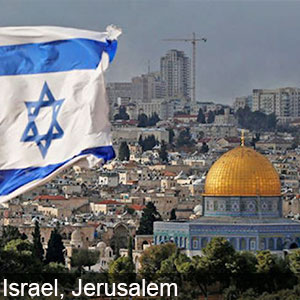
Israel, of Legends & Miracles
Overview / Highlights
6 NIGHTS / 7 DAYS The Center for Latino-Jewish Relations and Crypto-Jewish Studies teams up with Jewish Heritage Alliance to develop "Israel, of Legends & Miracles" Hasbara (Diplomacy) tour series under the Friends of Zion Imitative. These Hasbara tour series are a form of outreach programs intended to bring the Latino and Jewish Communities closer together in support of Israel. We try to educate the Hispanic and Jewish communities about shared values, history and lineage, in the hope of advocating for better understanding. The trips provide the opportunity for these leaders to learn about thriving, modern, democratic Israel through first-hand experience, rather than the controlled misleading version delivered by a biased media, thereby strengthening the positive attributes of Israel.
Tour Program Summery Outline
|
Click |



Day 1, Wednesday Dec 05: Arrive Tel Aviv
Welcome to Israel… you are now in the land of the Bible and the eternal homeland of the Jewish Nation. The re-birth of Israel is an unprecedented phenomenon in human history. We will live the miracle of a people expelled from their land some 2,000 years ago and after two millennia of exile, fulfilled the Biblical prophecy of return, speaking the same language and having recovered their national dignity. This, singular historic event is not merely unique to historians but is a demonstration of the Hope that is both the watchword and national anthem (HaTivah) of the Jewish people.Meet and greet upon arrival at Ben Gurion Airport with VIP-assist after deplaning. Complete immigration formalities and commence to exit the airport.
Before exiting the building we stop for a brief “Shehecheyanu”, a blessing in Hebrew with literal meaning (“Who has given us life") and is a common Jewish prayer recited to give thanks to God for enabling us to experience a new or special occasion.
We board our sightseeing bus and make our way towards Yafo for an orientation tour of this ancient port city in Israel. Yafo (sometimes spelled Jaffa in English) is famous for its association with the biblical stories of Jonah, Solomon and Saint Peter, as well as the mythological story of Andromeda and Perseus, and later for its oranges.
Modern renovated Yafo boasts cobblestone paths and winding alleys twist through the massive stone fortifications that surround the city. Yafo is now an artist’s quarters complete with galleries, cafes, and shops. Visitors can follow the walls that snake around the bottom of the city for a look at how this ancient area is alive with some of the area's best restaurants and nightclubs, art galleries and high-quality folk craft shops sell fabrics, ceramics, metal works, jewelry and clothes.
Lunch is at Dr. Shakshuka. Situated to the side of the flea market, and with the same chaotic yet ebullient spirit, this courtyard restaurant’s does the best version of its signature dish in Israel. Shakshuka, a spicy, yet comforting tomato stew, served here in a battered frying pan, and topped with a fried egg.
After lunch we check-in at the Royal Beach Tel Aviv Hotel, a luxurious property, offering great hospitality, strategically located in the heart of the promenade, allowing guests to enjoy the most popular sites in Tel-Aviv: Carmel market - one of the largest open markets in Israel, Neve Tzedek neighborhood, Tel-Aviv Port and more. It is also close to nightlife and entertainment: restaurants, museums, art galleries, shopping malls and theaters.
Afternoon panoramic tour of historic Tel Aviv, visiting the “White City” section located between Allenby Street in the south, Begin Road and Ibn Gvirol Street in the east, the Yarkon River in the north, and the Mediterranean in the west. It has been called the White City for the simple reason that most buildings in the area are… you guessed it, white!
The White City of Tel Aviv is the world’s largest collection of International or Bauhaus style buildings. We pass along Rothschild Boulevard is one of the most important and iconic streets in Tel Aviv located in the heart of the White City of Tel Aviv, Rothschild Boulevard is a commercial center, with major financial institutions lining the street, a cultural center, with the main theater and concert hall of Tel Aviv, a culinary center, with tens of top restaurants, and a leisure center, with the center of the boulevard popular with dog walkers, bikers, and some of Tel Aviv’s wealthiest and most beautiful who stop off at the amazing coffee kiosks found in the center of the street.
We have arrived in the Holy Land during the eight-day Jewish celebration known as Hanukkah or Chanukah, one of the most beautiful Jewish holidays commemorating the Maccabees’ against the Asyrian Greeks’. Some of the main traditions of this holiday include candle lighting each night of the week and eating fried foods, including Sufganiyot (or filled donuts). At sundown (early evening) we will partake in this happy and joyous tradition, lighting the candle of that evening and singing popular Chanukah songs.
This evening a special treat as we head to Aria for an intimate dinner in this amazing two-story complex that hosts both a restaurant and a cocktail bar. Recently opened, the restaurant menu is created by Chef Guy Gamzu, offering a wide variety of dishes with carefully selected ingredients and raw materials.
Overnight at the Royal Beach Hotel. (L,D)
Day 2, Thursday Dec 06: Tel Aviv – Jerusalem
Following breakfast we make out way to Beit Hatfutsot located on the Tel Aviv University campus in Ramat Aviv. The Museum of the Jewish People conveys to the world the fascinating narrative of the Jewish people and the essence of the Jewish culture, faith, purpose and deed while presenting the contribution of world Jewry to humanity.Next we visit Taglit, a Center for Israeli Innovation. Israel not only has an intriguing political climate and religious history, but is also known as the Startup Nation. Although modern Israel is just 70 years old, this newborn country ranks in the top eight most powerful innovative countries in the world and rivals the United States in many fields including agriculture, medicine and computer science.
The Taglit Center for Israeli Innovation in Partnership with the Tel Aviv Stock Exchange provides an opportunity to talk about the fact that Israel has over 4,000 plus operating startups. Through the center’s lens, we will learn about Israel as an international leader in technology, engineering philanthropic and groundbreaking inventions for agriculture, medicine, transportation, security, and outer space.
We break for lunch at Claro. This recent culinary addition to Tel Aviv’s trendy scene is situated inside an “intimate” 150-year-old space preserving the historic character of the building with an authentic and striking look. The original vault of the National Printing Office from the 1950s is located in “LeMata”, as well as distillery rooms and a tunnel connecting the building to the adjacent winery.
We resume our drive with a stop at the Ayalon Institute located in Rehovot. Prior to and during the War of Independence the Ayalon Institute was a top-secret operation that took place from 1945 to 1948 that produced over 2.25 million bullets in a clandestine underground factory, built not far from the British occupation authorities.
Our next stop is the Weizmann Institute of Science, one of the world’s top ranking institute. Named after the first president of Israel, the Weizmann Institute of Science is a public research university in Rehovot, Israel, established in 1934. It is one of the world’s foremost academic institutions.
We continue to Jerusalem and check-in at the luxurious Orient Jerusalem Hotel, situated in the heart of a neighborhood called today, the German Colony. Our hotel is walking distance from many cultural, tourist, and historic attractions. The hotel includes two renovated Templar residences at the entrance, part of its efforts to blend into the 19th-century architecture of this historic neighborhood.
This evening is an amazing “Foodie” experience at Jerusalem's Eucalyptus Restaurant. The Eucalyptus is located on a set of steps in the old city, surrounded by artists workshops, pots filled with herbs and flowers, and a view of Jerusalem’s ancient walls. Chef and owner, Moshe Basson greets his guests with traditional Middle Eastern hospitality. Chief Basson is famous for being a part of the slow food movement. His menus include century-old Middle Eastern recipes.
Overnight at the Orient Jerusalem Hotel. (B,L,D)
Day 3, Friday Dec 07: Jerusalem (Visits)
Following breakfast we begin this touring day with a stop at the Israel Museum, Israel’s largest cultural institution, ranked among the world’s leading art and archaeology museums. Founded in 1965, the Museum houses encyclopedic collections, including works dating from prehistory to the present day, in its Archaeology, Fine Arts, and Jewish Art and Life Wings, and features the most extensive holdings of biblical and Holy Land archaeology in the world.During our short visit, we shall tour the Model of Jerusalem in the Second Temple Period. The model, measuring some 1,000 square meters, was created by Professor Avi-Yonah. Avi-Yona's based his reconstruction on descriptions from Jewish sources, particularly the Mishnah, and the writings of the contemporary historian Flavius Josephus. He also relied on archaeological finds from Jerusalem and from other Roman cities.
We then go from ancient Israel to the darkest periods of Jewish history, the Holocaust. We visit Yad Vashem, Israel’s largest Holocaust memorial set on the slopes of the Mount of Remembrance on the edge of Jerusalem. Yad Vashem is Israel’s official memorial to the Jewish victims of the Holocaust – visiting Yad Vashem is a very humbling experience, but a definite must do if you want to gain a deeper insight into the Israel and Jewish psyche.
Yad Vashem, which means “a place and a name” in Hebrew (referring to the millions who were not given the dignity of a Jewish burial with a specified burial plot), also recognizes and honors a number of non-Jewish people that helped save Jews during this bleak period. These heroes are referred to as “The Righteous among the Nations”. It’s a place that remembers the past and safeguards its memory for future generations so that people can learn about what happened, why it happened and the significance and effects of it all.
We continue our day with a visit to Jerusalem’s bustling open-air Mahane Yehuda market. The market offers a dizzying assault on the senses. Vendors exemplify typical Middle Eastern “haggling” over their products’ prices with the smell of spices and fresh fish wafts through the air. From vegetable stalls, bakeries and boutique wine and cheese bars to fish and chip or falafel stands and sit-down restaurants of every style and price range, the now gentrified market’s dozens of eateries present the widest assortment of culinary options in the city.
Here we feast in traditional Middle Eastern food at the famous Azura Restaurant, a family-run institution in the Jewish-Iraqi market famous for its Turkish-inspired delicacies that are slow-cooked to perfection atop kerosene burners. Spread across an entire cobblestone courtyard, the eatery offers a taste of old Jerusalem with an array of soups, salads and specialty dishes. But when it comes to Middle Eastern food, one dish will always reign supreme — hummus. Azura’s version is creamy, soaked in oil and sprinkled with parsley and warm chickpeas that melt in your mouth.
Azura’s food is rich in cultural history that reflects the various ethnic backgrounds of the Jewish Middle East that make up modern Jerusalem, including Iraqi, Turkish and Tunisian influences.
Time permitting, and at the group’s option, we also can choose to visit picturesque Mishkenot Sha’ananim, a part of the first neighborhood constructed outside the Old City walls. Built along the pastoral top of a mountain overlooking the Old City walls in 1860, the historical area is popular among artists with venues for art and culture in the spirit of dialogue, cooperation and pluralism.
By 4:00 pm one feels the Sabbath arriving. As the sun sets and the Sabbath comes to Jerusalem, we hear the requests for G-D to grant Sabbath and grant peace to Jerusalem.
This evening a special treat… Shabbat of a Lifetime offers a unique event for visitors of all backgrounds to experience an authentic Shabbat (Jewish Sabbath) at the home of a host family in the heart of Jerusalem, complete with explanation of the special relationship between Shabbat and the Jewish Nation.
Overnight at the Orient Jerusalem Hotel. (B,L,D)
Day 4, Saturday Dec 08: Jerusalem (Visits)
This morning we head towards Qasr al Yahud (The Jews’ Castle or Palace), a site located on the banks of the Jordan River not far from Jericho. Christian tradition associates Qasr al Yahud with the site of Jesus’ baptism by Matthew (Matthew 3) and it has been revered as such from at least the fourth century. There are many monasteries and churches in the area testifying to the long religious tradition at Qasr al Yahud. In Jewish tradition the crossing of the Jordan by the Children of Israel under Joshua (Joshua 3) must also have taken place in this general area. It is also associated with the site where Elijah handed over the prophecy to Elisha and rose to heaven on a fiery chariot (2 Kings 11).We continue to Israel’s equivalent of the Alamo: Masada. On the way we shall pass Qumran, the site where the Dead Sea Scrolls were discovered in eleven caves near the site. Historians have called The Dead Sea Scrolls the greatest manuscript find of all time. Discovered between 1947 and 1956, the Dead Sea Scrolls comprise some 800 documents but in many tens of thousands of fragments. The Scrolls date from around 250 B.C.E. to 68 C,E. They contain Biblical and apocryphal works, prayers and legal texts and sectarian documents. This priceless collection of ancient manuscripts is invaluable to our understanding of the history of Judaism, the development of the Hebrew Bible, and perhaps some of the beginnings of Christianity.
We arrive at Masada (Hebrew for fortress), a place of gaunt and majestic beauty that has become one of the Jewish people's greatest symbols as the place where the last Jewish stronghold against Roman invasion stood. More than two thousand years have passed since the fall of the Masada fortress yet the regional climate and its remoteness have helped to preserve the remains of its extraordinary story.
The Masada complex, built by Herod the Great, King of Judaea, who reigned between 37 BCE and 4 CE, and particularly the "hanging" palace with its three terraces, is an outstanding example of opulent architectural design, elaborately engineered and constructed in extreme conditions. The palace on the northern face of the dramatic mountain site consists of an exceptional group of classical Roman Imperial buildings. The water system was particularly sophisticated, collecting run-off water from a single day's rain to sustain life for a thousand people over a period of two to three years. This achievement allowed the transformation of a barren, isolated, arid hilltop into a lavish royal retreat.
For lunch we depart Masada heading to the Dead Sea and Ein Bokek, the main beach of the Dead Sea hotel area. We lunch at Herods Dead Sea Hotel, a luxurious, elegant 5-star hotel located right on the shores of the Dead Sea at the Hamme Zohar area. Make sure to bring a bathing suit.
The lowest place on earth, the Dead Sea (431 meters below sea level) brings together breathtaking natural beauty, compelling ancient history and modern mineral spas that soothe and pamper every fiber of your body. The jagged bluffs of the Judean Desert, cleft by dry canyons that turn into raging tan-colored torrents after a cloudburst, rise from the cobalt blue waters of the Dead Sea, heavy with salt and oily with minerals.
We head back to Jerusalem and the hotel in time for “Havdalah” Service. Havdalah is a Jewish religious ceremony that marks the symbolic end of Sabbath and ushers in the new week. The ritual involves lighting a special Havdalah candle (with several wicks), blessing a cup of wine and smelling sweet spices. Shabbat ends on Saturday night after the appearance of the first three stars in the sky.
Tonight we dine with Jews who returned home from Spanish and Portuguese speaking countries in Latin America and Europe (Spain & Portugal). These are members of Olim, an organization dedicated to help returnees from Latin speaking countries integrate into Israeli society, as well as Lone Soldiers. All this takes place at an historical dining experience with incredible views. Tonight we dine at Touro is a Mediterranean kosher meat chef restaurant located in the heart of the picturesque Mishkanot Sha’ananim neighborhood and boasts a breathtaking view of the Walls of Jerusalem and the Tower of David. The restaurant is named after Yehuda Touro (1775-1854), an American Jewish philanthropist, and it is thanks to his generous donation and that of Moses Montefiore that the neighborhood was established.
We bring the Sabbath to a close with the simple yet poignant Havdalah ceremony
Overnight at the Orient Jerusalem Hotel. (B,L,D)
Day 5, Sunday Dec 09: Jerusalem (Visits)
Optional Mass: For those who desire to attend Mass we arranged to drive you to the Church of the Holy Sepulcher. Mass presided by the Latins in the Edicule of the Holy Sepulcher begins at 4.30 each morning and is repeated each half hour until 7.45After breakfast a special Israeli treat. We begin today at the beautiful, newly renovated Yvel Design Center, one of Israel’s most prestigious jewelry sold in some of the world’s best-known stores. Yvel luxury jewelry brand was founded by Orna and Isaac Levy in 1986. Isaacs childhood experience making Aliyah from Argentina (returning to the land of his forefathers), rendered him sensitive to the plight of Jews retuning home.
One such success story is Daniel Sahalo, a proud Israeli, a Hebrew University graduate, a captain in the IDF reserves (more on the IDF below), a husband and a father of two little boys. What’s special about Daniel is that he was born in a small farming village in Gaina (Ghana Africa). Daniel will share with us his incredible journey of life-threatening dangers and survival, including food shortage, in order to make his way back to Israel. Approximately 90% of Yvels 100 plus employees are new arrivals from around the world. Next we visit United Hatzalah, the largest independent, non-profit, nationally recognized and fully-volunteer emergency medical services (EMS) organization in Israel. United Hatzalah's cadre of 5,000 medics, paramedics, and doctors create a web of emergency first responders, each connected to a proprietary GPS-based dispatch system which, together with our nimble motorcycle ambulances ("ambucycles"), provides lifesaving aid faster than any other EMS organization in the world. This service is free of charge, 24/7. In Israel last year, United Hatzalah's highly qualified volunteers treated over 295,000 people. For more information, visit www.israelrescue.org.
Albeit it’s a Sunday, we were able to secure a visit at the Guatemala Consulate for a briefing by the Consul General of Guatemala about the long-shared history and mutual support between Israel and Guatemala. In a show of solidarity, following the move of the US Embassy to Jerusalem, the Guatemalan President Jimmy Morales moved the Guatemala Embassy to Jerusalem.
We break for lunch at Karma, the landmark restaurant in picturesque Ein Kerem, Karma. The prestigious Karma restaurant opened a decade ago in Ein Kerem, and since then it has become a local hot-spot, building its reputation of high quality and great food. The spacious restaurant includes an inner sitting place and a balcony overlooking the Judean hills and the pastoral landscape of the village.
To know the people of Israel one must understand the IDF (Israel Defense Forces), that is our next stop. We visit an IDF base (and checkpoint) located near the Tomb of Rachel, for a first-hand experience and observation of Israel’s unique, highly motivated, “People’s Army”. Israel’s army is much more than military service. Israel, for all it’s amazing, miraculous successes and technological achievements, is a country surrounded by enemies that seek its annihilation. The IDF allows the citizens of Israel to go on about their daily lives without being sidetracked by this ongoing existential threat. In Israeli culture, joining the IDF is a rite of passage, a way of life (men are conscripted for 3-years’ service and serve in the reserves till age 49). The IDF is a microcosm that connects Israelis from all walks of life, the place where its citizenry transforms its youth to adulthood.
We continue to visit Rachel's Tomb, one of the holiest sites in Judaism, the biblical burial place of the matriarch Rachel, the favorite of Jacob's two wives, and the mother of Joseph and Benjamin, two of the twelve progenitors of the tribes of Israel.
Return to Jerusalem for dinner in Naurah restaurant located in Abu Gosh, the ultimate experience for anybody looking for tasty Middle Eastern Food. The town of Abu Gosh, just outside Jerusalem in the Jerusalem Hills, considered the unrivaled hummus capital of Israel, and some would say, the world. An Arab-Israeli village, Abu Gosh is famed across Israel for its amazing hummus restaurants, with Israelis traveling from far and wide.
Overnight at the Orient Jerusalem Hotel. (B,L,D)
Day 6, Monday Dec 10: Jerusalem (Visits)
This morning a very special visit to Jerusalem of old as we make our way to the Western Wall (in Hebrew the Kotel Ha’Maarivi), the western support wall of the Temple Mount. Thousands of people journey to the wall every year to visit and recite prayers. These prayers are either spoken or written down and placed in the cracks of the wall. King Harod built the Second Temple (Beit HaMikdash), and the Romans destroyed it in 70 CE. What remains is the Kotel or the support wall. For hundreds of years, people have prayed in a small area of the wall that could be seen. In 1967, following the Six Day War, Israelis dug below the ground of the wall, exposing two more levels of the wall. We will partake in this excavation of the Western Wall Tunnels, a ‘time tunnel’ to ancient Jerusalem, walking along the construction site and artifacts that shed light on life in this special city during its most glamorous era, the Second Temple period. The Western Wall of the Temple Mount is one of the most magnificent and significant remnants in Jerusalem from the days of the Second Temple, destroyed approximately 2,000 years ago. The Western Wall stretches along almost half a kilometer, but today, the part visible to all at the Western Wall Plaza is a mere 70 meters of it. This walking tour of the Tunnels unveils hidden sections of the Western Wall. It moves through underground passages, mikves (ritual bath houses) and ancient water trenches, streets from the Second Temple era, a quarry used to excavate stones for the Kotel (Western Wall) and more. The Western Wall’s enormous courses of stone are revealed in full size and magnitude, telling us about the architecture and building practices of different historical eras.We continue our tour with visit to Sephardic Synagogues. The "Sephardic synagogues" is the name of a compound that includes 4 synagogues belonging to the Spaniard sector in the ancient city in Jerusalem. The synagogues are located in the corner of the Jewish quarter. Building the Sephardic synagogues was the initiative of Sefarad Jewry (Spain and Portugal) that returned to Jerusalem in the early 16th century, after they were forced out of Spain in 1492. Briefly after their arrival, in the year 1517 the Ottomans occupied Israel. On the whole the Ottomans who were tolerant towards all the Sephardic Jews. In the 16th century they started building the compound.
For lunch we visit Falfel Ofer, a typical and popular Israeli fast food stand featuring Israel’s most famous and popular fast food, the falafel.
Following lunch, we visit Friends of Zion Museum. The Museum brings to life stories of non-Jewish love and heroism to the world. Magnificently told using ground-breaking technology found nowhere else in the nation, visitors experience the unfolding story as though stepping back in time. Accompanied by a moving original musical score, fantastic surround sound, lighting second-to-none and interactive displays that appear to come to life before your very eyes. Visitors enter a whole new world, where they meet the biblical figures, academics, businessmen, and military officials who, through their faith, have forged an everlasting bond between the Jewish and its non-Jewish friends.
We return to the hotel for an interesting afternoon Discussion / Presentation with Gil Hoffman, chief political correspondent and analyst for The Jerusalem Post. Well-connected to Israeli and Palestinian leaders, he has interviewed every major figure across the Israeli political spectrum, has been interviewed by top media on six continents, and is a regular analyst on CNN, Al-Jazeera and other news outlets. Called "The most optimistic man in Israel" by Israel Television, Hoffman provides a behind the scenes look at the intrigue and humor in the Israeli political arena. He was raised in Chicago, graduated Magna Cum Laude from Northwestern University's School of Journalism, and wrote for the Miami Herald and Arizona Republic before moving to Israel. A reserve soldier in the IDF Spokesman's Unit, he has lectured in every major English-speaking country in the world.
Farewell Dinner and closing remarks at a private dinner at the hotel.
Overnight at the Orient Jerusalem Hotel. (B,L,D)


